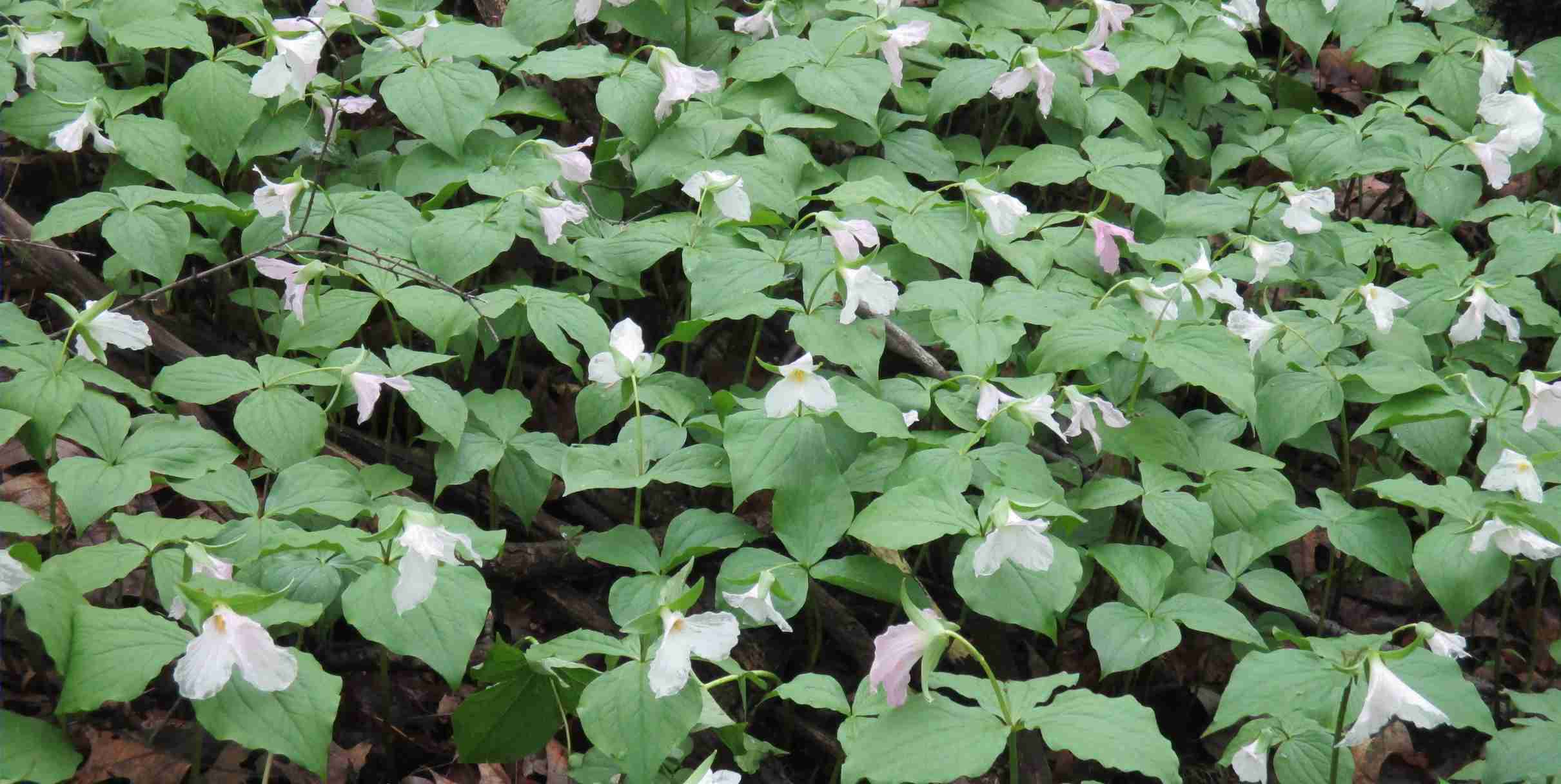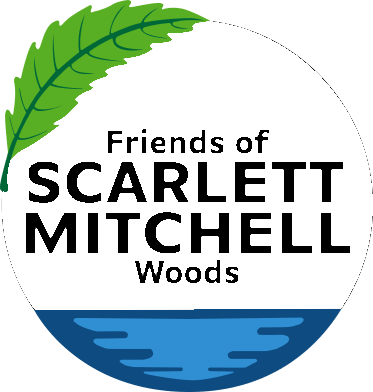A tree stands on the lawn of Scarlett Middle School, between the bus turn-around loop and the entrance to Mitchell-Scarlett Woods. The tree is a black walnut, but instead of a single trunk it has multiple trunks, some of which rise to a height of fifty feet or more. Because it stands alone, its branches spread out in a crown, glorying in the light. This past fall (fall of 2019) the tree produced an especially abundant crop of black walnuts, making it difficult to walk through the circle of grass in a radius of about 25 feet around the tree.
I love to pick up and hold those green husked orbs when the October winds blow them off the branches and knock them to the ground. The satisfying heft of them fills my hand. I dig my thumbnail into the husk and bring the bruised spot to my nose. The odor is stringent but pleasant to me. When I do this with second graders, I find that not everyone enjoys that scent. Some do, but others scrunch up their noses and blurt out, “Eeewww!” At which I grin and remind them of the Environmental Education mantra, “You mean, how interesting, right?
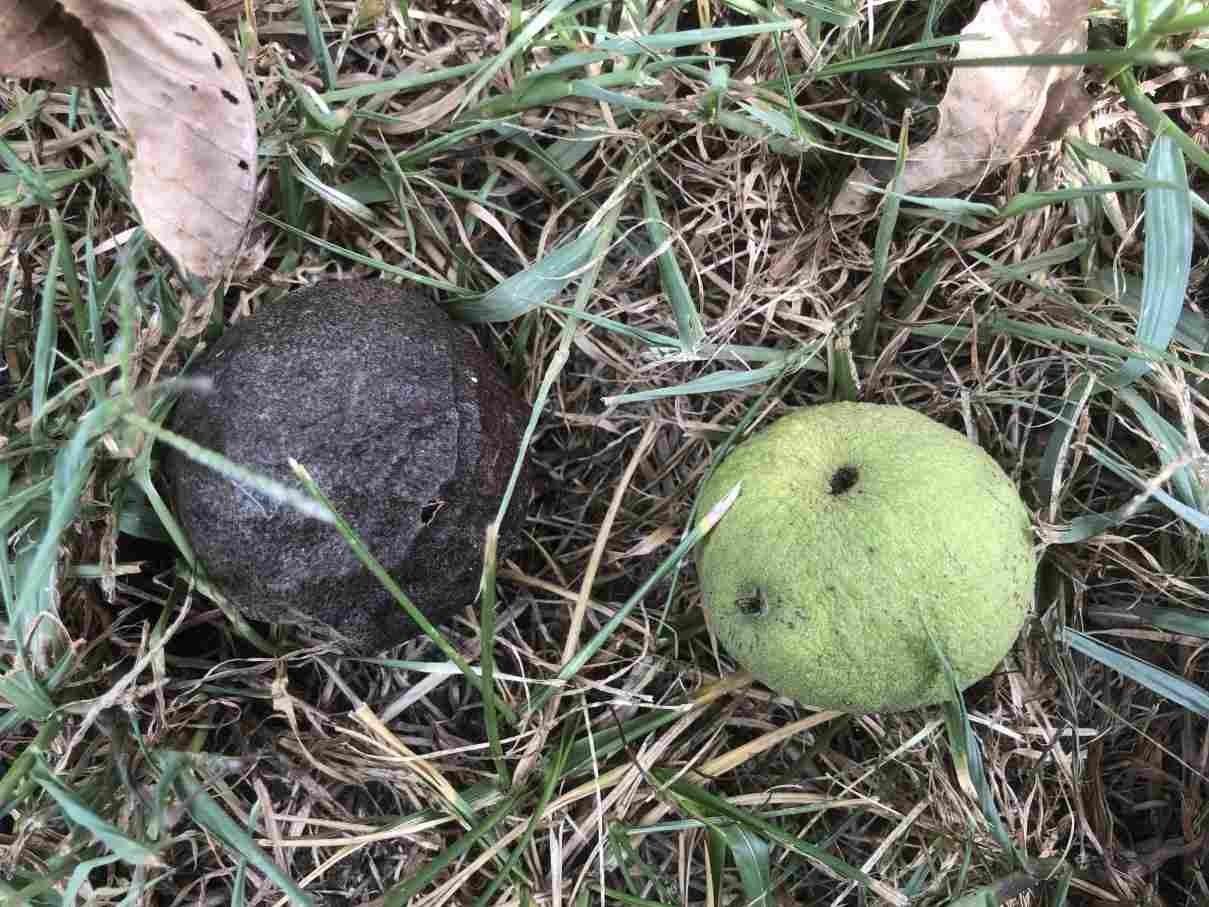
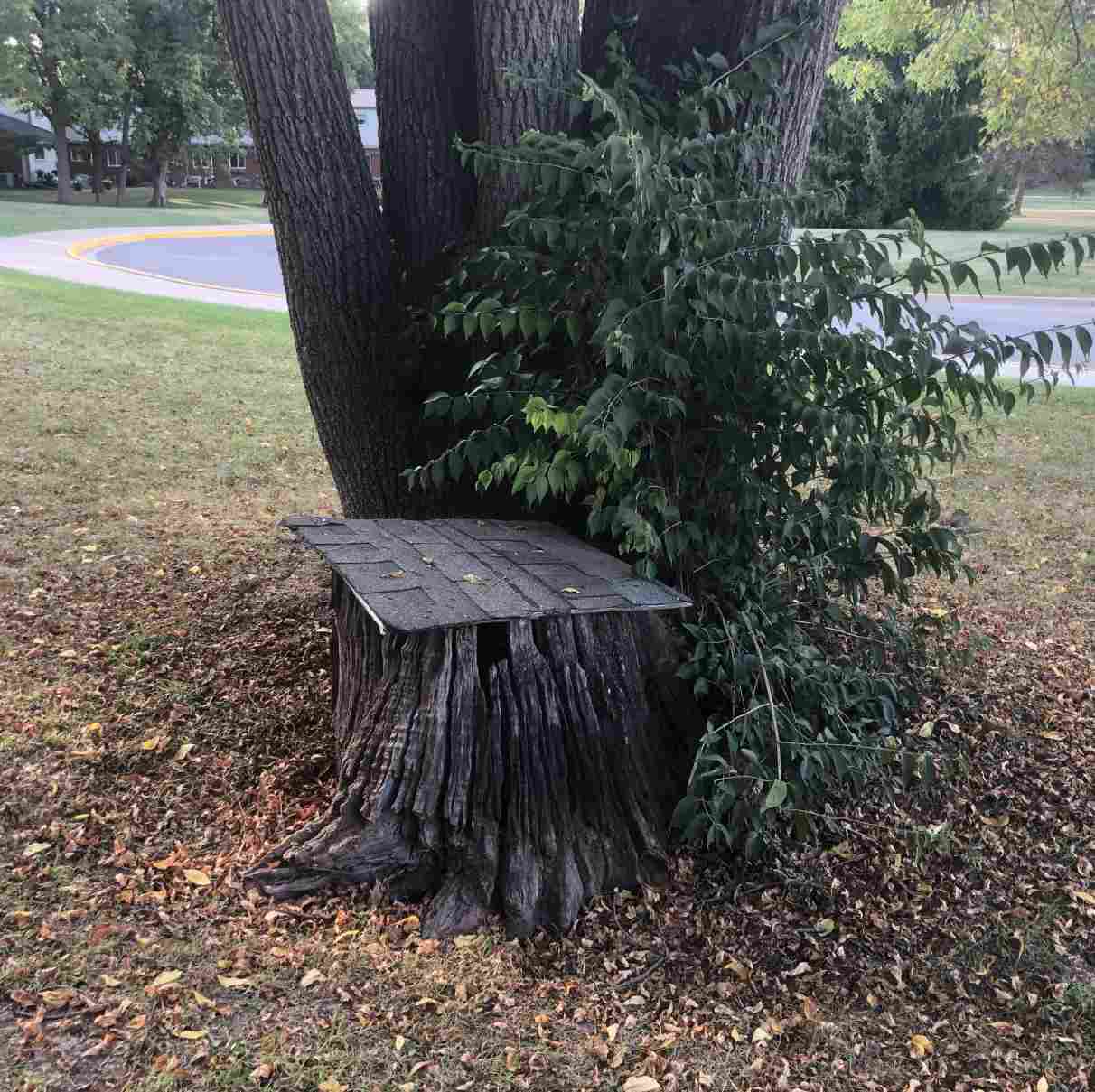
Then I show them the stump behind the trunk and tell them the story of this tree. Back in the late 1960s, this tree, and another black walnut helped us decide to start working on preserving Mitchell-Scarlett Woods as a natural area for everyone to enjoy. This is how it began:
My husband, Manfred, and I moved into Colonial Square Cooperative in 1965, right after it was built. Our daughter, Karin, was six years old and in the first grade at Mitchell Elementary School. Scarlett was not yet open. Manfred was taking classes at Washtenaw Community College when it was located in Willow Run, before its current campus had opened. I was into my second year as a school librarian in the Wayne Westland School District. I commuted 20 miles to work, carpooling with a couple of other teachers from Wayne Memorial High School via I-94 and U.S. 12. When I got home in the late afternoon, I often transitioned from work by changing into my jeans and comfortable shoes to roam the inviting pathways of the woods.
During these explorations Stalking the Wild Asparagus by Euell Gibbons, a book that was quite popular at the time, was one of my guides. I had been a birdwatcher and a tree lover since my Girl Scout days in the 40s and 50s, but now I began to pay more attention to the tender plants, especially the ones that were edible. Following Euell’s advice, I harvested and cooked spring beauty tubers and cattail bloom, and one particularly fruitful September, found enough ripe mayapple fruit to make mayapple marmalade. That was so delicious, I would have kept on doing it, but in the subsequent five decades there has never been a crop like that first one!
One day, while roaming the woods, I noticed that a large tree had been cut down and hauled away. It turned out to be a mature black walnut that had fallen victim to a tree pirate. Walnut wood was valuable. Even back in the 1960s we were told you could get $1,000 for a log that large and whoever cut it figured no one would know or care. That was the start of our understanding that this land needed protection. We formed a group of co-op neighbors and settled first on the name Operation Mitchell-Scarlett Woods and later Mitchell-Scarlett Woods Association. We also enlisted teachers and kids at Mitchell and at Scarlett Junior High which opened around 1967.
The core members of MSW though, were from Colonial Square – Kate Riddlesberger, Sherry Emly and Dave Hinshaw are the names that come to mind. Jim Patt, a Scarlett science teacher, was really helpful in getting his 7th grade life science students involved. Manfred was, and remains, the most active instigator of our save-the-woods activities.
Early on we discovered that the center 40 acres of the woods was owned by the school system, purchased in the 1950s as a potential site for a 3rd high school. But we quickly learned that preservation of natural features was not a primary goal of the school system. In February, 196?, a crew from the central administration came out and, thinking it was dead, cut down that black walnut tree on the lawn at the south end of the loop. We never found out who gave the order, but we were sure the tree was not dead and time proved us right. The cutting of that tree however, helped mobilize our group of activists. We felt we could not depend on the schools to take care of the woods. That desecration was another impetus to the events that followed – including speaking at School Board and City Council meetings as well as countless community groups with two goals: one to preserve the 40 acres as a natural area and two, to prevent a builder from putting up a housing development on the 25 acres to the east of the school owned property. Originally we wanted to include the area where Turnberry subdivision now stands and finally, the western 25 acre triangle bordering on Platt Rd, which we came to know as the Korshak section. We lost out to developers on Turnberry, and it took us another 25 years to secure that western triangle. When we began we were clueless as to what it would take to protect the final 90 acre natural area.
Meanwhile, during those decades, shoots from the black walnut stump near the Scarlett bus loop began to grow. I don’t remember paying much attention to the shoots at first, but by time I retired from my 30 year career as a school librarian in 1994, they had gotten pretty tall. The stump from whose roots they had grown began to hollow out, but slowly, as black walnut wood is quite resistant to decay.
I retired in 1994 and a year or two later, began volunteering as a naturalist with the AAPS Environmental Education program, which had been started by Bill Stapp in the 1960s. Bill Browning, the beloved second director of that program also retired around the same time that I did. David Szczygiel, who taught science at Clague, was chosen as his successor. Dave’s classroom was just across the hall from the Clague library, where I spent the last 22 years of my career and I knew him as an extraordinary teacher.
The A2SEE program’s curriculum was well established by the 1990s and there were many field trips in Mitchell-Scarlett Woods. At first, I mainly volunteered for Habitat walks, usually with second graders. The bus drivers dropped the kids off and picked them up at the loop. Sometimes, at the end of a trip we got back early. While we were waiting for the other groups, we often checked out the stump to see what kinds of insects or spiders we could find. I would tell the kids the story of the stump – how the tree trunks that now towered over them had grown from it as shoots.
One day in May, 2014 I did a Habitat walk with a group of 3rd graders from Pattengill . Their experienced teacher, Mrs. Beech, accompanied my group of ten students and despite the mosquitoes we had a good time finding insects and other arthropods in the woods. But, as I wrote to my daughter, Karin, “the fun started when we got back to the bus with about five minutes to spare. While Mrs. B., who looked like her legs were bothering her, sat in the shade, I took them over to the black walnut stump.
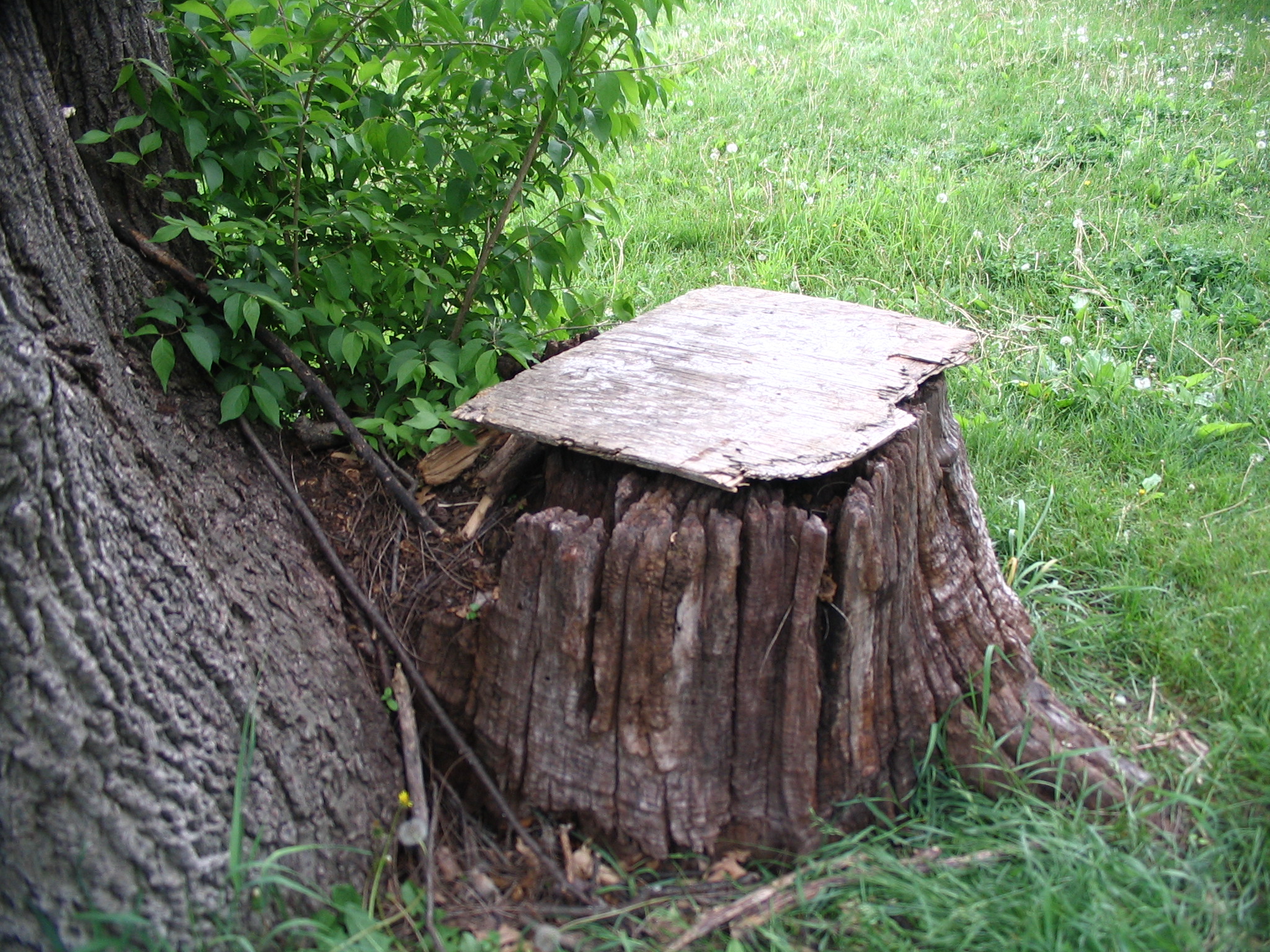
There’s usually some spiders or daddy long-legs hanging out there. Someone had put a raggedy piece of plywood over the stump – not sure exactly why. As we were peering into the stump one of the kids said, “Look, there’s a snake!” And sure enough, curled up in a little notch about three inches below the rim was a little brown snake. I’ve seen them before in Mitchell-Scarlett and looked them up, but for the life of me, could not remember what they’re called. Then Dave came out of the woods with his group and my kids very excitedly ran up to them crowing, “We found a snake! We found a snake!” Dave pondered for a minute and dredged up the name, “I think it’s a DeKay’s snake,” and, of course, as soon as I heard it I knew he was right.
Very shortly, the kids got back on the bus and left for Pattengill. I had my camera with me, but I didn’t think about taking a photo until later. Finally about four o’clock, after cleaning the bathroom and spending too much time on Facebook, I went back out to the stump to see if the snake was still there. Just a scattering of raindrops was coming down. When I lifted off the plywood, though, instead of the DeKay’s, a medium small garter snake was curled up in the same place. As it slithered away into the recesses of the stump, I managed to get a shot of it before it was completely out of sight. Underneath it, however, was another garter snake, the same size, all curled up.
Normally, I would have let the second snake be, but I somehow had to know whether the brown, Dekay’s snake was still there. So I took a stick and gently prodded the second garter snake until it too slithered away. And sure enough – underneath the second garter snake was the Dekay’s, which just stayed there and let me take its picture. I know snakes gather together in holes when the weather is cold, but this was a kind of warm, humid day, so I’m not sure what was going on.
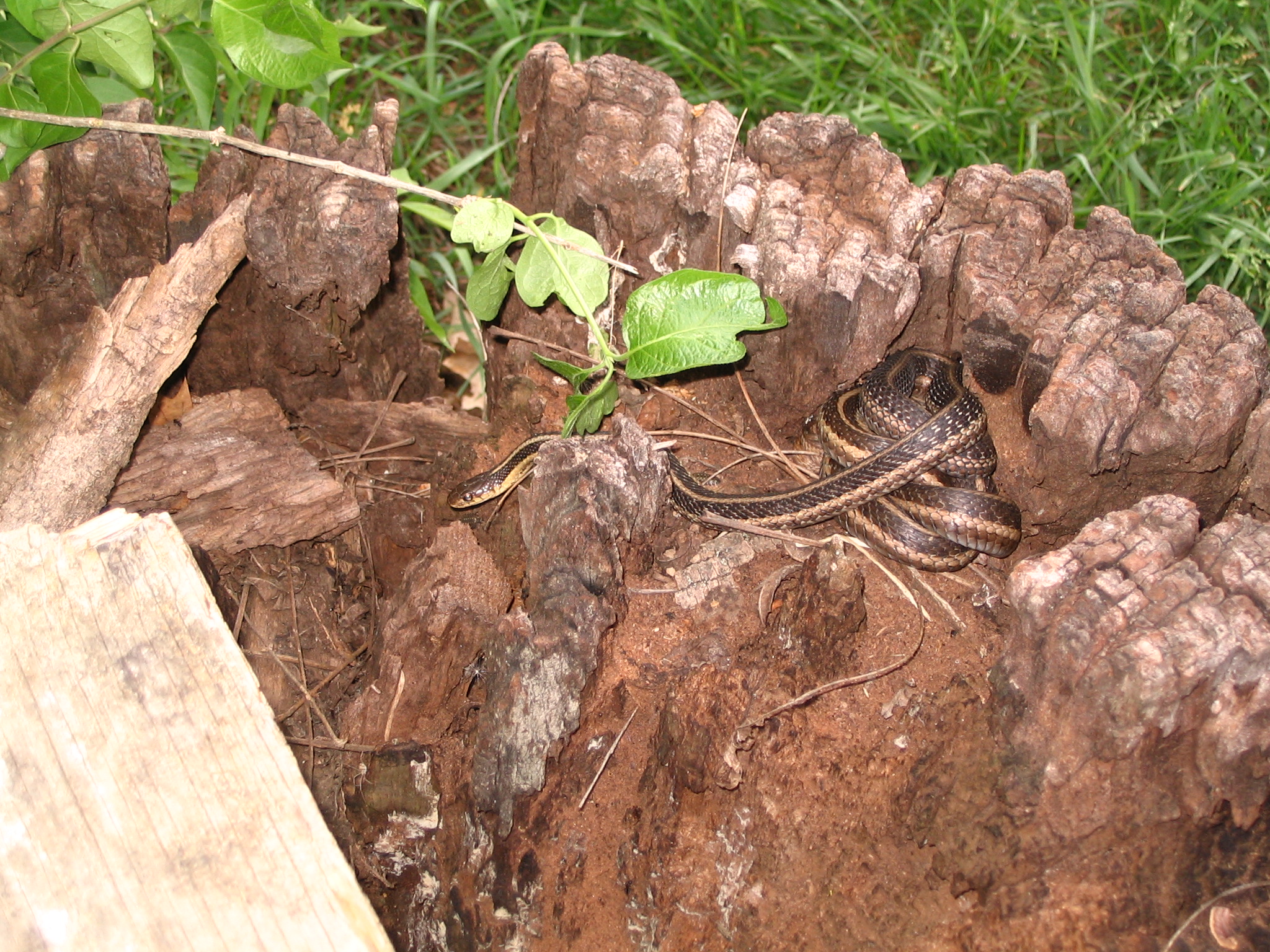
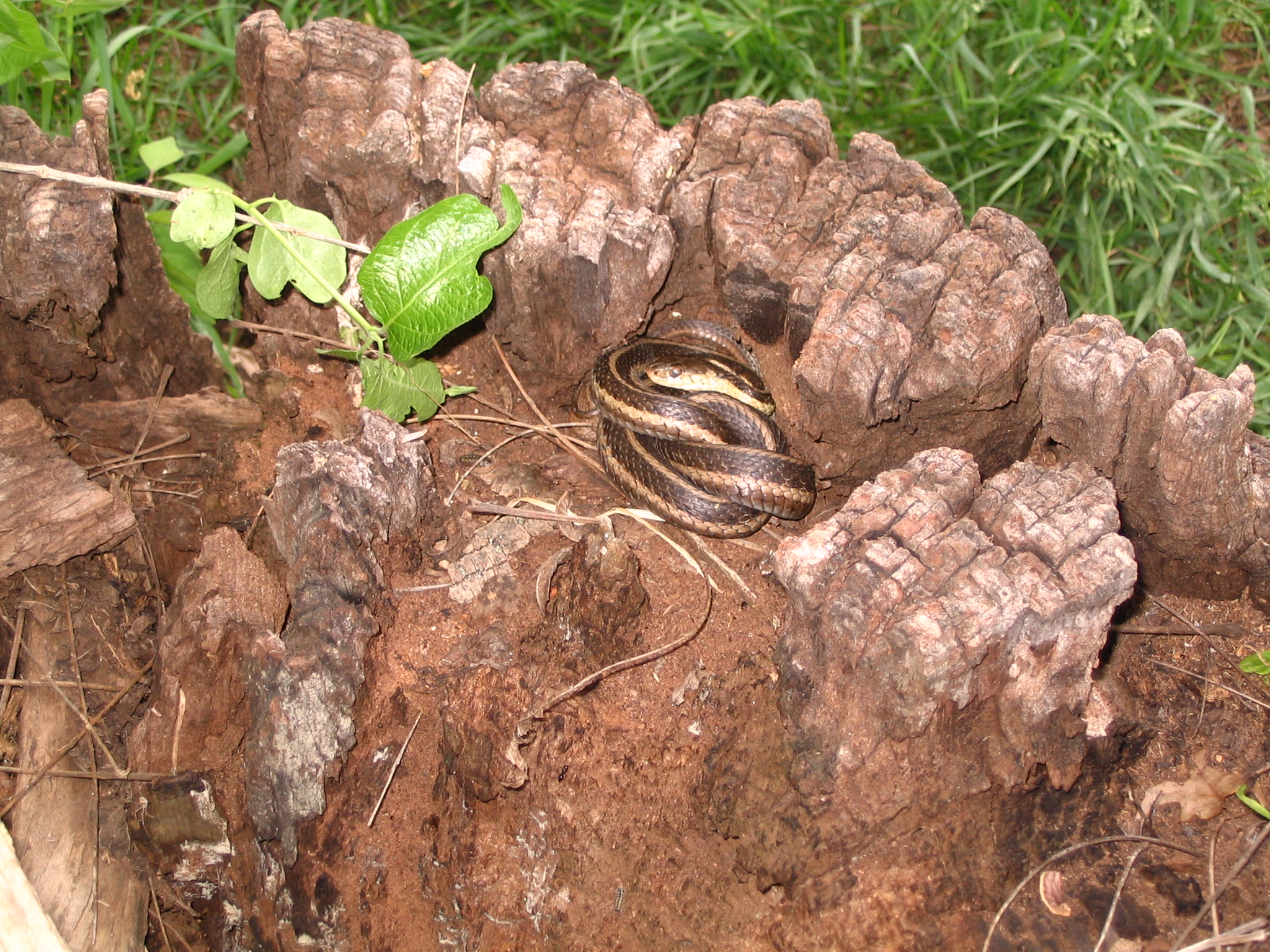

Since that day, I often check the stump on warm days in the spring and fall to see if the snakes are there. I don’t know where they go when they slip away but I am grateful to witness another of Nature’s mysteries and pleased to know that we had a part in preserving their habitat.
